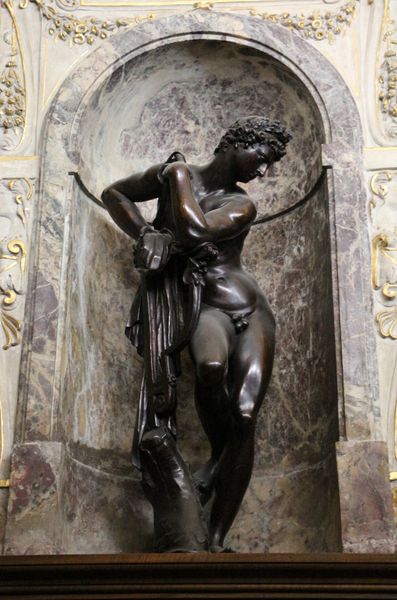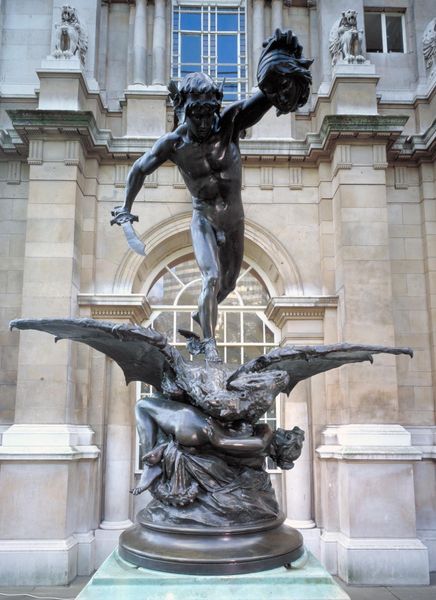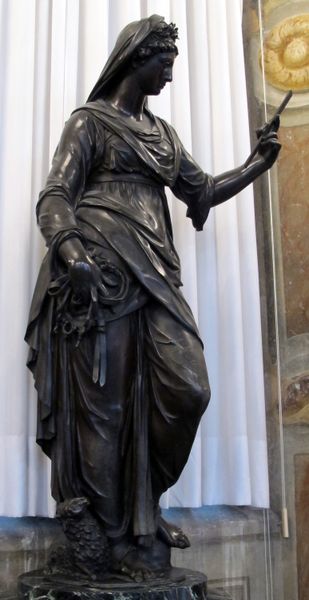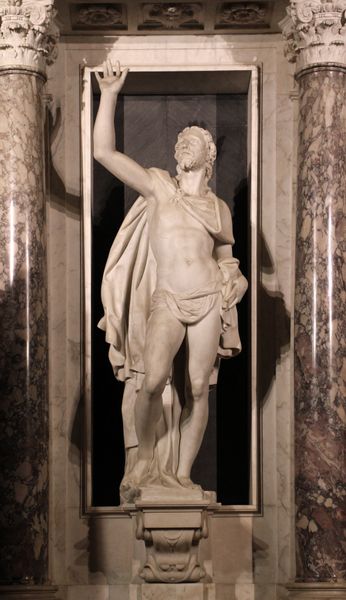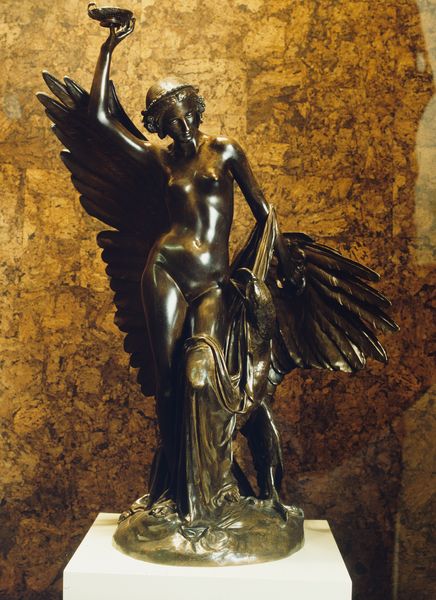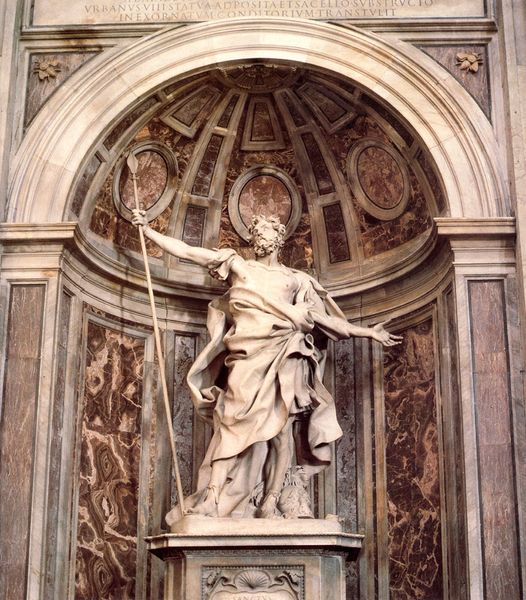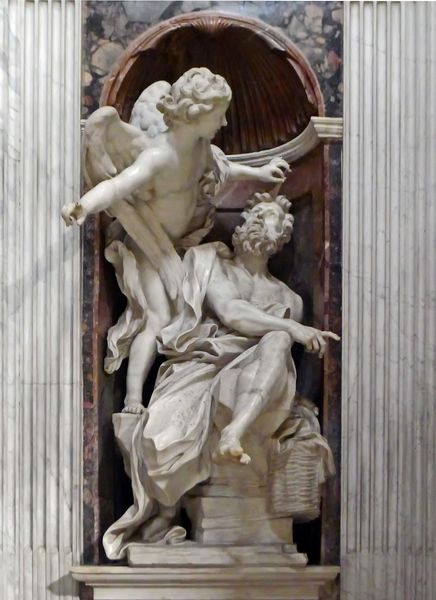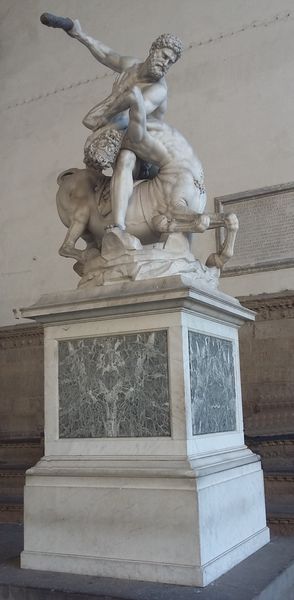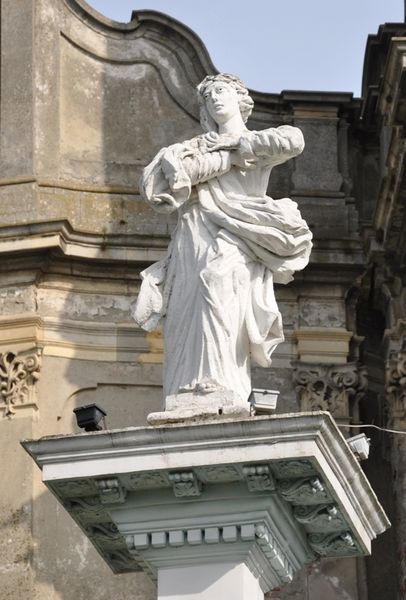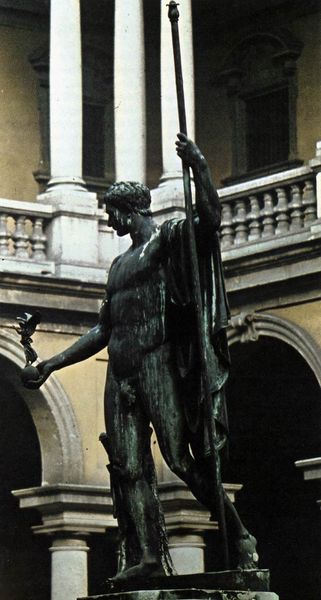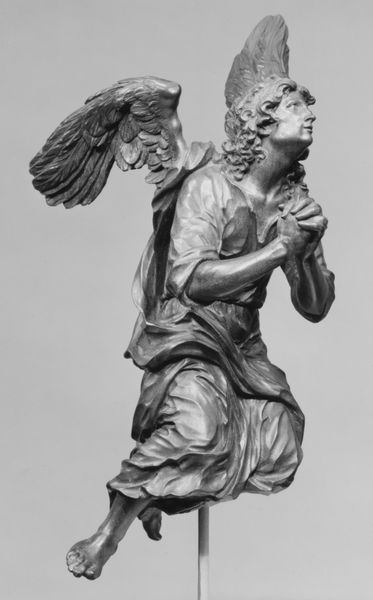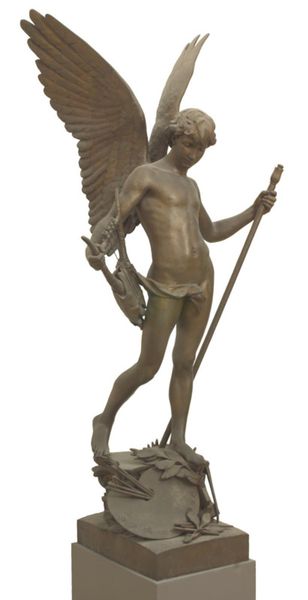
bronze, sculpture
#
medieval
#
sculpture
#
bronze
#
mannerism
#
figuration
#
sculpture
#
history-painting
Copyright: Public domain
Editor: This is Domenico Beccafumi’s bronze sculpture, "Angel," created in 1547. The patina on the bronze is so rich; it gives the angel a really striking, almost earthy presence. What can you tell me about it? Curator: Notice how the angel isn't floating ethereally but rather planted firmly on a rather elaborate pedestal? This speaks volumes about the materiality and labor involved. Beccafumi wasn't just divinely inspired; he was actively engaging with bronze, a material rooted in the earth and transformed through intense, often dangerous, labor. Do you see any evidence of the casting process? Editor: Now that you mention it, I can see what might be casting seams and imperfections… parts that aren't perfectly smooth. It’s a bit different from the idealized forms of the Renaissance. Curator: Exactly! And Mannerism embraced those kinds of imperfections, because it emphasized the artifice of art. How would the viewer react to that roughness and the dark patinated surfaces, rather than the polished marble preferred in the early 1500s? It disrupts conventional ideas of beauty, which often correlated with luxury and wealth. What about the angel’s pose - any clues about the relationship between maker and angel? Editor: It seems to be making an offer with a candle… almost a laborer holding an offering rather than descending from heaven. It gives me a new way to look at what an angel represents. Curator: Indeed. By examining Beccafumi’s conscious manipulation of materials and labor, we challenge any neat separation between art, craft and social class. This Angel serves less as a heavenly figure and more as a testament to earthly realities and processes. Editor: I hadn't considered the angel's earthly connection, the labor needed for this piece. Thanks, I learned a lot today!
Comments
No comments
Be the first to comment and join the conversation on the ultimate creative platform.
